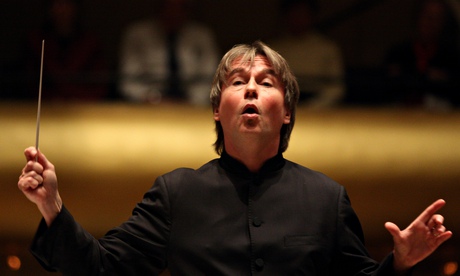
The Philharmonia’s new season opened with a performance of Berlioz’s Grande Messe des Morts, conducted by Esa-Pekka Salonen. “Beautiful and strange, wild, convulsed and dolorous,” is how the poet Alfred de Vigny described it in the aftermath of its Paris premiere in 1837, of which there are stories, probably apocryphal, of audience members being scared half to death by the sheer volume of some of it. At once controlled and extreme, it can still be a devastating experience. On this occasion, despite fine playing and singing, its impact was fitful.
The Royal Festival Hall isn’t quite the venue for it. The score is conceived spatially, with the brass bands that herald Judgment Day placed round the audience, a layout the hall cannot accommodate. With three of the bands placed close to the orchestra and the fourth in a side box, the decibel count was pulverising, though the requisite effect of sound echoing through a vast, eerie void went unrealised.
We’ve also become used to hearing the work in more reverberant acoustics like the Albert Hall or St Paul’s Cathedral. The drier sound of the RFH, however, suits Salonen’s approach, which was linear and clear, strong on counterpoint, austerity and dynamic control, if short on awestruck numinosity. The centre of his interpretation was located, tellingly, in the Offertorium, with its pleading, humane choral unisons, rather than the surrounding cosmic drama.
The Philharmonia Voices, meanwhile, were joined by choral societies from Gloucester and Bristol. Their singing made up in commitment for what it occasionally lacked in finesse: the tenor line, which so many choirs seem to find difficult, was in this instance admirably sustained. Despite a pulse in his tone, Sébastien Droy, the tenor soloist in the Sanctus, was stylish and elegant, if a bit too earthbound.

